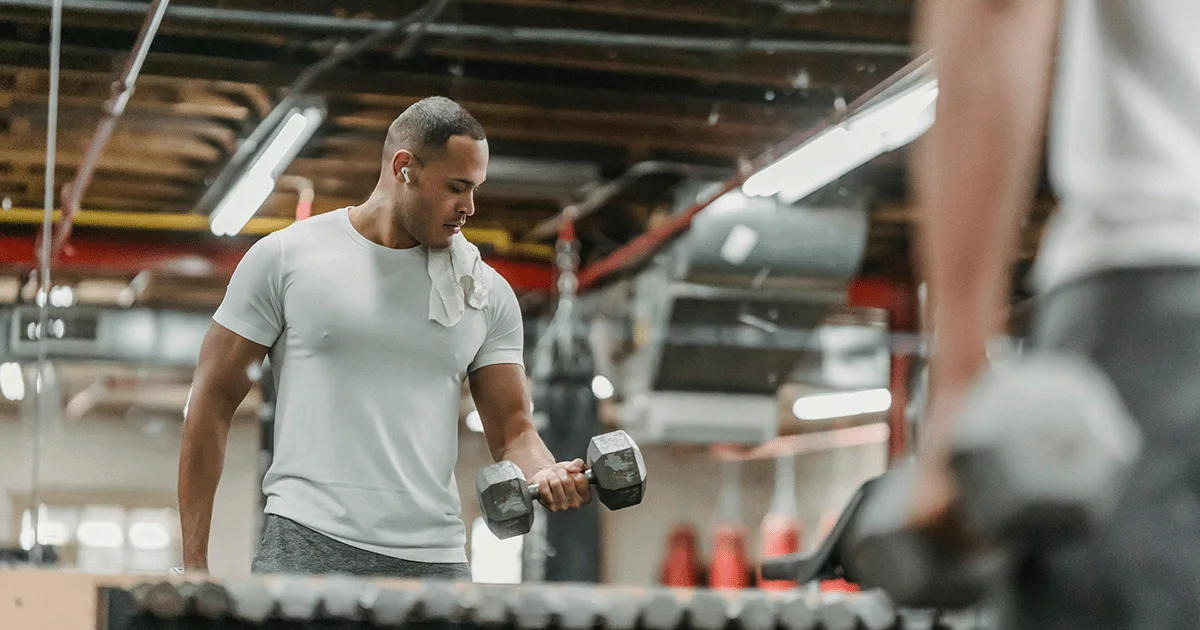Here's what we'll cover
Here's what we'll cover
Here's what we'll cover
People start running for all sorts of reasons. No matter why you started running, you’ve likely set a goal to run faster at some point. You’re not alone—increased speed is one of the most common exercise goals for runners of all levels.
There are many different ways you can build up your endurance and learn how to run faster. However, it's not going to be as simple as “just run faster.” Increasing your speed usually involves implementing many small changes that build over time.
Whether you’re looking to start racing, meet new goals, or just seeking an extra boost for your workouts, here are some tips for picking up the pace while you run.
Why is running speed important?
Unless you’re racing, it really doesn’t matter how fast you complete your runs. However, to stay motivated in your workouts, you’ve probably got some performance goals in mind. Finding out just how far and how fast you can go is likely one of them.
There are some advantages to adding speed work to your running routine, including:
Increasing your aerobic capacity
Training the fast-twitch fibers in your skeletal muscles
Increasing your ability to process lactic acid build-up
Increasing myoglobin, which improves oxygen transport in the body
Researchers did a small study on runners and found that their running economy (the amount of energy used while running) improved after 40 days of intense and reduced volume training. Researchers believe this is due to the muscle fibers adapting to this type of training. Participants had improved their 10 km running performance and had higher anaerobic capacity by the end of the study (Skovgaard, 2018).
Why am I not running fast?
There are many reasons you may not be achieving the faster speeds you want during your runs. It could be that you just haven’t built up the endurance to run as fast as you want to yet, but it could also be that you’ve developed some habits that are slowing you down.
Make sure you have realistic expectations of what you can accomplish in the time you devote to training. 60% of all running injuries are the result of doing “too much, too soon.” Your training program should expose your muscles to gradually increasing stress with periods of rest interspersed throughout. This can prevent overloading your muscles and having to stop training due to injury (Johnston, 2003).
Make sure that you aren’t pushing past injuries. Instead, let your body get the rest and healing it needs. Whether you're a new runner or an experienced racer, remember that it's important to listen to your body while training.
Here are some signs that you may need to increase your rest time to keep exhaustion or risk of injury from slowing you down:
Aches and pains that take more than a day to go away or that keep coming back
Getting sick more often than usual
Feeling irritable
Loss of appetite
Poor sleep
5 general running tips
If you’re new to running, these tips are important for staying safe and injury-free as you get going.
1. Don’t forget to stretch
Be sure to loosen up your leg muscles before you start your running workout. Warm-up and cool-down exercises can help you avoid stiff muscles and soreness after exercises. It can also help with injury prevention. Dynamic stretching (a movement-based type of stretching) is an excellent choice.
2. Get the right fuel
All runners need the right fuel for their workouts. This looks different for each person, but, in general, you’re going to want to ensure that you’re consuming enough calories, carbs, and protein for optimal performance (Kerksick, 2017).
For intense runs, this might include using sports drinks or gels during your run to make sure you have enough energy to make it to the finish (Kerksick, 2017).
3. Stay hydrated
You lose water through sweat whenever you work out, whether it's hot or cold outside. Pay attention to your thirst levels while you run and drink before, during, and after you run.
If you’re doing a long-distance or intense run, some of your hydration should include a sports drink. This will help your body replace the carbohydrates and electrolytes it loses through sweating.
4. Wear the proper outfit
You don’t need fancy running gear; comfort is the most critical quality for running clothes. Stick with lightweight clothing in sweat-wicking materials. Look for polyester, nylon, or wool, which all absorb very little water, unlike clothes made of cotton. Dress in layers, especially in the winter, so that you can remove articles as you warm up.
5. Get a good pair of running shoes
Having the proper footwear to support your body as you run can help you increase your overall speed and comfort.
Research into running shoe construction shows that shoes with a softer, thicker midsole can reduce impact forces and provide better cushioning. Minimalist running shoes can improve your running performance, but they also put more stress on your feet than conventional shoes. (Sun, 2020).
5 tips for beginners to run faster
Once you’ve gotten the hang of running in general, you may want to start working on your speed. Here are some tips to help you run faster.
1. Build muscle
Your core muscles are vital to supporting your body while running, especially when doing intense training. Strength training can help you build stronger muscles and improve your speed and overall performance.
Schedule one or two short strength training sessions each week. Bodyweight exercises are fine if you don’t have access to a gym. If you can, do these workouts on the same day as your runs so you can fully recover on your rest days.
2. Join a group
Running with a group is great motivation to continue or step up your training. Running groups can provide tips, encouragement, boost your fitness levels, and help you determine when you’re ready to run faster or further.
3. Work on your form
Perfecting your running form can make you a more efficient runner, helping you run faster. Small adjustments to your posture and gait can leave you with more energy available to fuel a faster running pace (Folland, 2017).
Keep your head up, and don’t hunch your shoulders. Let your arms swing naturally with your elbows bent at a 90-degree angle. Your hands should stay relaxed.
4. Make a plan
It can feel overwhelming to sort out all of the different speed training and endurance-boosting workouts that are available. It can help to choose a pre-made training plan to keep you organized and focused. Choose a plan that targets the specific speed or distance goals you want to train toward. This will make it more likely that you’ll get the results you're looking for.
5. Add in hill training
Running hills helps build lower body strength and increase your speed. You can start to incorporate them into your routine after you build up an endurance base. Then, work hill sessions into your training schedule once a week. Find a hill with a moderate slope and run up it with hard effort. Be sure to maintain your form. Cool down by walking down the other side. Add hill sprints to your regimen each week until you can work up to 10 repeats.
5 advanced tips for running faster
After a while of running consistently, you’re no longer a beginner—you’re ready for the big leagues. These tips are more advanced, but they can help even intermediate or advanced runners increase their running speed.
1. Add sprints
Fartlek runs are a great way to train to run faster. Fartlek is a Swedish word that means "speed play." They are simple, quick bursts of speed that vary in distance. A fartlek run consists of alternating between sprint and recovery runs. They can last 20 minutes or longer, depending on the runner.
Fartlek intervals can vary in length. You can use telephone poles or mailboxes to mark your distance or even the chorus of your favorite song. After warming up, sprint for the interval you have chosen and then recover for the same amount at a slower pace. Repeat the pattern until you cover a mile. These runs let you get comfortable with running faster.
2. Join a race
Boost your motivation by signing up to run a longer or faster race than you’ve run before. Adjust your training schedule to challenge yourself. Humans tend to be naturally competitive. The presence of competitive opponents (even if it's just friendly competition) pushes people to run faster than they usually do.
3. Don’t forget to relax
It may seem like a paradox, but getting proper rest can help you in your quest to run faster. Running hard every day won’t actually make you faster. Rest is necessary to prevent injuries and help your body recover after a run.
You can still do some physical activity on your rest days; just keep it easy and enjoyable. Your mental health may benefit from the break, as well, while your muscles build and repair themselves.
4. Do interval training
Interval training is a type of running workout where you alternate between short bursts of intense running and brief recovery periods. The goal is to maintain the same speed for all of your intervals. Intervals help your regular runs become easier and faster.
Some popular interval training forms include Tabata training, high-intensity interval training (HIIT), and tempo runs. They can help you boost your aerobic and anaerobic fitness levels.
5. Strengthen your core
Running isn’t just about your leg muscles; the strength of your core muscles can also affect your running speed. Cross-training exercises will build strength along your body, improving mobility, easing low back pain, and stabilizing your hips, thighs, and knees. The stronger abdominals you gain from core exercise will improve your posture, which allows for more efficient breathing and frees up your legs to work harder.
DISCLAIMER
If you have any medical questions or concerns, please talk to your healthcare provider. The articles on Health Guide are underpinned by peer-reviewed research and information drawn from medical societies and governmental agencies. However, they are not a substitute for professional medical advice, diagnosis, or treatment.
References
Folland, J., Allen, S., Black, M., Handsaker, J., Forrester, S. (2017) Running technique is an important component of running economy and performance, Medicine & Science in Sports & Exercise, 49 (7), 1412-1423, doi: 10.1249/MSS.0000000000001245. Retrieved from https://journals.lww.com/acsm-msse/Fulltext/2017/07000/Running_Technique_is_an_Important_Component_of.17.aspx
Johnston, C. A., Taunton, J. E., Lloyd-Smith, D. R., & McKenzie, D. C. (2003). Preventing running injuries. Practical approach for family doctors. Canadian Family Physician Medecin De Famille Canadien , 49 , 1101–1109. Retrieved from https://www.ncbi.nlm.nih.gov/pmc/articles/PMC2214294/
Kerksick, C., Arent, S., Schoenfeld, B., Stout, J., Campbell, B., Wilborn, C., et al. (2017). International society of sports nutrition position stand: nutrient timing. Journal of the International Society of Sports Nutrition, 14 (33). doi: 10.1186/s12970-017-0189-4. Retrieved from https://jissn.biomedcentral.com/articles/10.1186/s12970-017-0189-4#article-info
Skovgaard, C., Christiansen, D., Christensen, P. M., Almquist, N. W., Thomassen, M., & Bangsbo, J. (2018). Effect of speed endurance training and reduced training volume on running economy and single muscle fiber adaptations in trained runners. Physiological Reports , 6 (3), e13601. doi: 10.14814/phy2.13601. Retrieved from https://www.ncbi.nlm.nih.gov/pmc/articles/PMC5803184/
Sun, X., Lam, W. K., Zhang, X., Wang, J., & Fu, W. (2020). Systematic review of the role of footwear constructions in running biomechanics: implications for running-related injury and performance. Journal Of Sports Science & Medicine , 19 (1), 20–37. Retrieved from https://www.ncbi.nlm.nih.gov/pmc/articles/PMC7039038/












